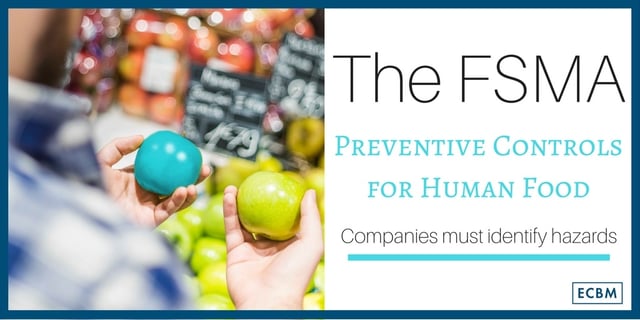
The Food Safety Modernization Act, passed in 2010 and signed into law in January of 2011, sought to introduce major overhauls in the way the United States government regulated food safety.
As part of that Act, the Food and Drug Administration had to introduce seven new rules on a variety of topics. These rules were carefully thought out and subjected to notice and comment rulemaking before becoming official.
What Is The FSMA?
The linchpin rule, Preventive Controls for Human Food, was officially finalized first. Released on September 10, 2015, four and a half years after the FSMA became law, the Rule on Preventive Controls for Human Food seeks to introduce good manufacturing processes for large swaths of the food industry and introduces several key definitions for determining over whom the FDA has jurisdiction to enforce its rules.
The Preventive Controls Rule has four key components
- The implementation of Hazard Analysis and Critical Control Points across a much wider array of the food industry
- The definition of what constitutes a farm versus a food facility
- Supply chain management program requirements
- Updates to current good manufacturing practices.
Important Terms In Food Safety
Hazard Analysis and Critical Control Points
The Rule requires that all covered facilities establish a written food safety plan based on HACCP. HACCP plans had previously been required in the fishing and juice industries, but the new rule requires them across most of the entire food industry.
This reflects a trend in the industry that had already seen many leading companies switch to this method to control and prevent contamination. Generally speaking, HACCP requires that companies analyze the key risks to their food products at various stages of production and implement controls to prevent those hazards from developing. It also requires that companies monitor their controls and take corrective action in the event of the failure of a control.
Definition of a Farm
Under FDA rules, a farm does not qualify as a food facility, and so does not have to comply with HACCP requirements. (Farms generally face different requirements for preventing food contamination as seen through the FDA’s Produce Safety Rule).
The FDA recognizes two different types of farms: primary production farms, which grow and harvest crops and/or raise animals, and secondary activities farms which generally involve the packing and processing of food from a primary production farm at a different location but under the same ownership as the primary production farm.
Supply Chain Programs
As part of HACCP, companies must identify hazards stemming from their obtaining of raw material and introduce appropriate controls to address those concerns. This means companies must either verify and approve their suppliers or address controls at other points in the processing of the food items to address these potential concerns stemming from supply chain issues.
Current Good Manufacturing Practices
Part of the updates to the FDA’s CGMPs now mandate education and training for employees and management. This includes education and training on hygiene and food safety. It also makes explicit the FDA’s position that CGMPs should address allergy concerns.
Important Information For Businesses
The Preventive Control Rule also has a complicated series of phase in dates based on business size and type as well as facility type. Some facilities will have to begin compliance in September of 2016, while others may be able to wait two or three years. Still, procrastinating these issues will not look good if contamination comes to light while a company waits until the end of their phase in period.


